Bannocks are well-known across Scotland and have been made for hundreds of years, but despite this, it’s hard to find a traditional recipe for this tasty “Scottish bread” because everyone has their own version!
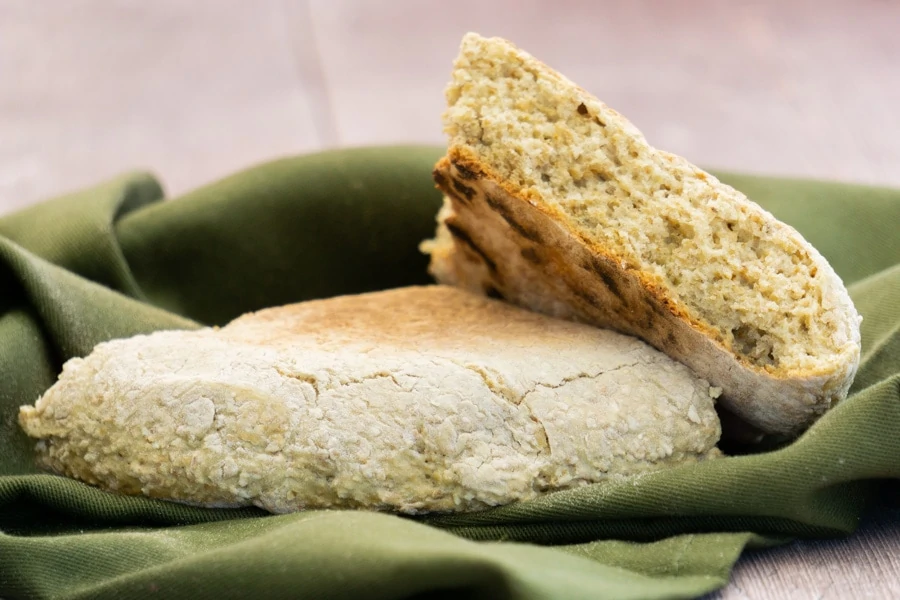
Why are Bannocks called Bannocks?
The name Bannock seems to originate from the Old Celtic English “bannuc”, derived from the Latin “panicium” for “bread” or meaning “anything baked”. Made simply from oatmeal and flour, the first citing of a bannock or bannuc recipe in Scotland was in the 8th Century. It’s amazing this tasty Scottish bread is still baked today!
Pin for later!
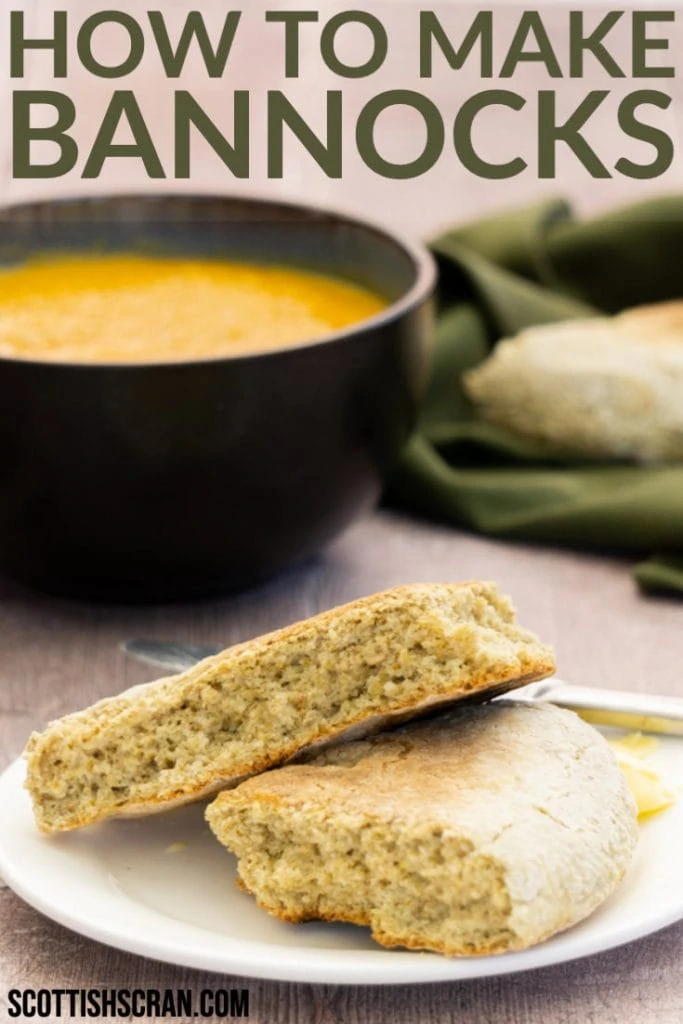
The Traditional Bannock is made of basic ingredients, and the recipe is simple, which is probably why they’ve been a part of life in Scotland throughout the ages. Such a part that Robert Burns mentions them in his song/poem ‘Bannocks O’ Bear Meal’, referencing the Jacobite uprising.
Bannocks O’ bear meal,
Bannocks O’ barley,
Here’s to the Highlandman’s bannocks o’ barley.
Wha, in a brulzie, will first cry a parley? Never the lads wi’ the bannocks o’ barley.
Bannocks O’ bear meal,
Bannocks O’ barley,
Here’s to the Highlandman’s bannocks o’ barley.
Wha, in his wae days, were loyal to Charlie?
Wha but the lads wi’ the bannocks o’ barley!
Bannocks O’ bear meal,
Bannocks O’ barley,
Here’s to the Highlandman’s bannocks o’ barley.
Robert Burns 1794 – Bannocks O Bear Meal
This nod to Bannocks by Burns himself may also be why they feature in the acclaimed TV show Outlander, definitely worth a watch or a read if you ask us!
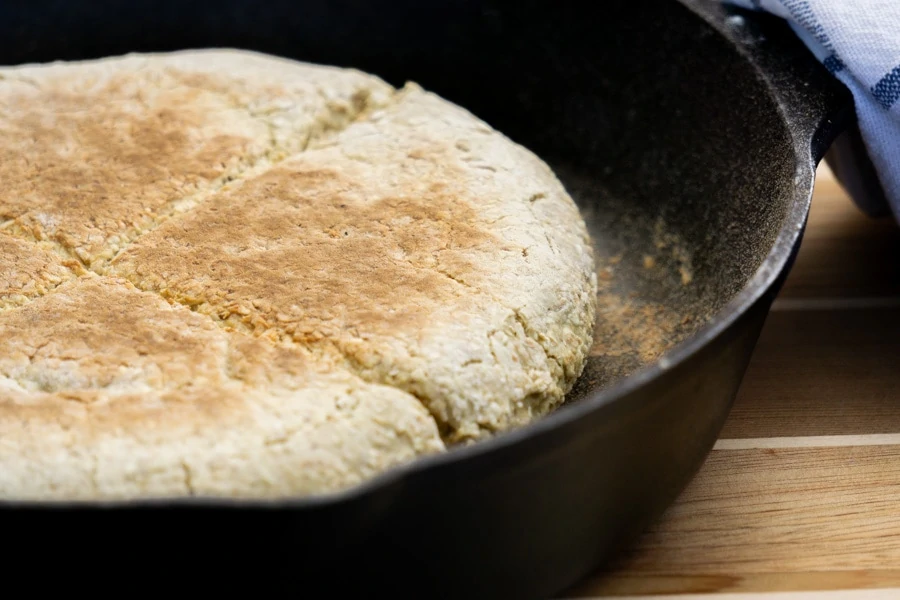
What is a Bannock?
Bannocks are a scone-like Scottish bread that’s both heavy and flat with a not surprisingly oaty or barley wholesome taste that suits most savoury dishes.
They’re the perfect side to any meal you might have bread with and you’ll find them often served warm with breakfast or with a bowl of Cullen Skink or Cock-a-Leekie Soup Recipe. They both warm the soul and the body while filling you up nicely.
Traditionally, Scottish Bannocks recipes call for the bread to be made on a stone in front of the fire, a “bannock stane.” Modern Bannocks recipes use a cast-iron Skillet, girdle, or griddle.
Don’t worry, though; a deep frying pan will also work. If that fails, you can bake them in the oven.
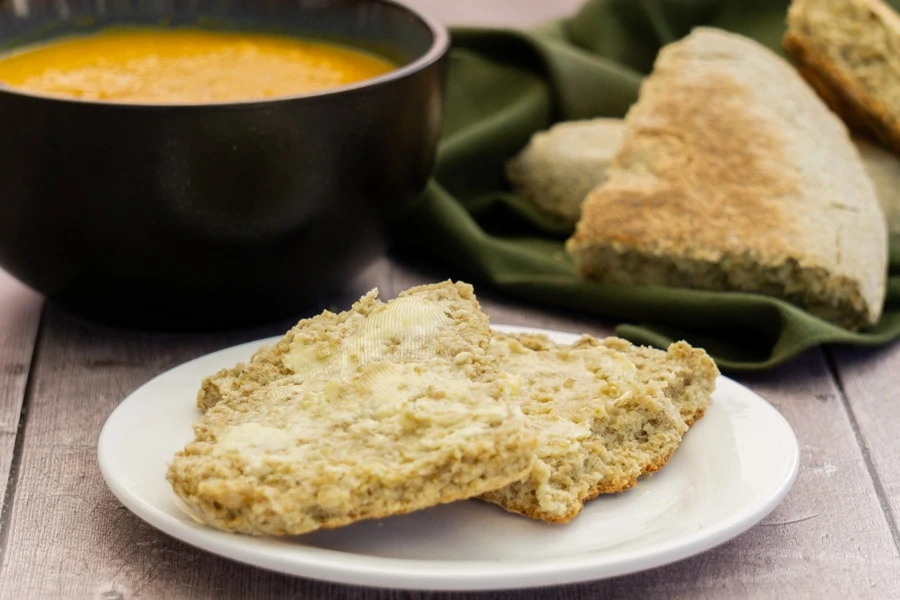
This Bannock recipe should not be confused with its younger cousin, the Selkirk Bannock. Despite having the same name, this version of a Bannock is a flavoursome fruit bun that is about as far removed from a traditional Scottish Bannock as possible.
The Selkirk Bannock has been made in Scotland for hundreds of years, and this classic is well worth your time. It is delicious!
Things you’ll need
- A flat Griddle or cast iron Skillet is traditional, we used this one. You can also use a frying pan or even bake in the oven
- Large mixing bowl
- Teaspoon
- Wooden Spoon
- Scales – We used this digital one
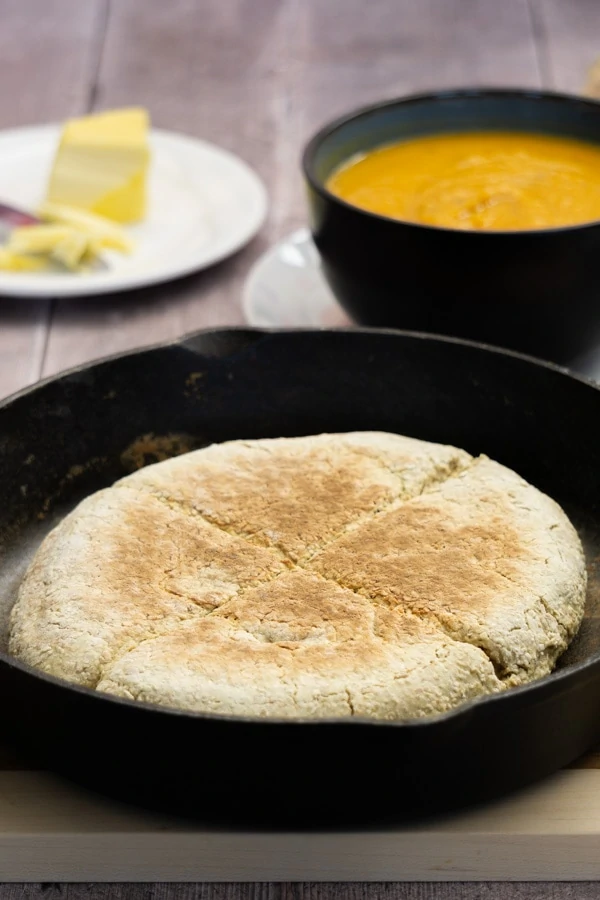
Ingredients
This recipe will give you two rounds, so 8 bannocks in total. You can halve the recipe if you wish!
- 330g Oatmeal (2 5/8 Cups) – We mean ground oats
- 265g Plain flour (2 1/8 Cups
- 2 tsp Baking soda
- 1.5 tsp Salt
- 1.5 Cups Buttermilk (375ml)
How to make Buttermilk
Not everyone has buttermilk available to them so we found a way of making your own and it’s really simple! All you need to do is stir lemon juice into full-fat milk and then leave it to settle.
For every 1 cup of milk (250ml) you need to add 2 tbsps of lemon juice, we juiced our own lemon but you can use pre squeezed juice.
Make sure it’s well mixed.
Leave it to settle for 30 minutes and it will thicken and curdle slightly, and viola, you have buttermilk!
Your buttermilk will keep for 3 days in the fridge so it can be made in advance if required.
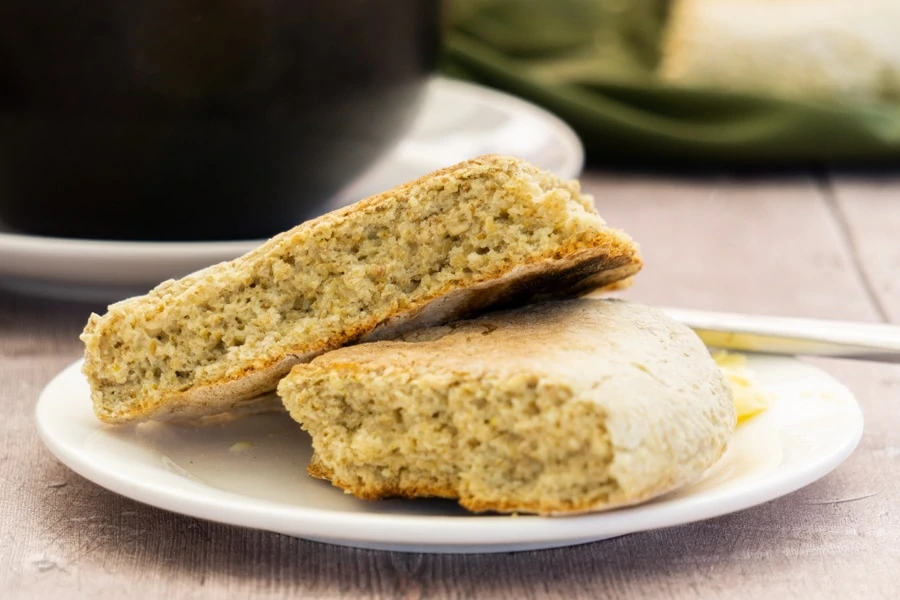
How to make Bannocks – Step by Step guide
If you’re making your own buttermilk start that now. While your milk sits for 30 minutes you’ll have time to make a cup of tea!
Make sure your skillet or griddle is in good condition and nicely pre-seasoned to avoid your bannock sticking. You can find some excellent tips for looking after your cast iron cookware here.
Mix the oatmeal and flour together in your bowl and add salt.
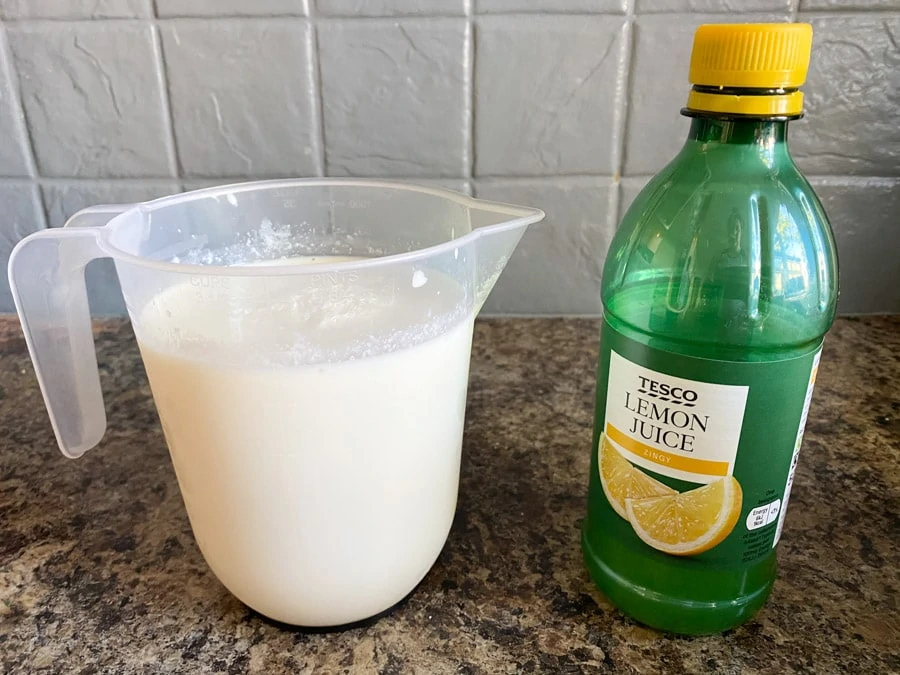
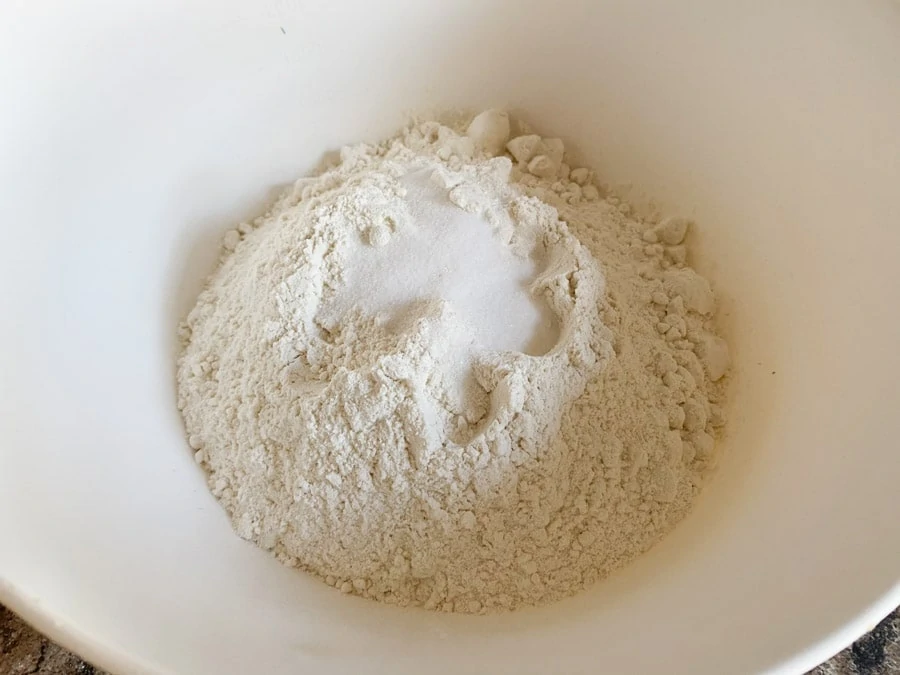
Turn the heat on low to start heating your griddle/skillet. We found that a slow consistent heat is better than heating it on a high burn then turning it down, it allows for a nice even cook.
Measure out your buttermilk, if you’ve made more than required, and add the baking soda to the milk. The buttermilk will bubble and increase in size slightly, don’t worry this is your raising agent and it’s quite normal!
Add your milk mixture to your bowl with the flour, salt and oatmeal bringing it together with a spoon to form a dough. We started with one cup of milk and then slowly added the rest because it can get sticky and wet, so don’t feel you have to use it all. If your mix does get too wet just keep adding a little flour at a time until you have a workable dough.
Take your mix out of the bowl and place it on a floured surface. Split the dough into two. Manipulate the dough into a flat circle about one inch in thickness and the right diameter to suit your griddle, skillet or frying pan.
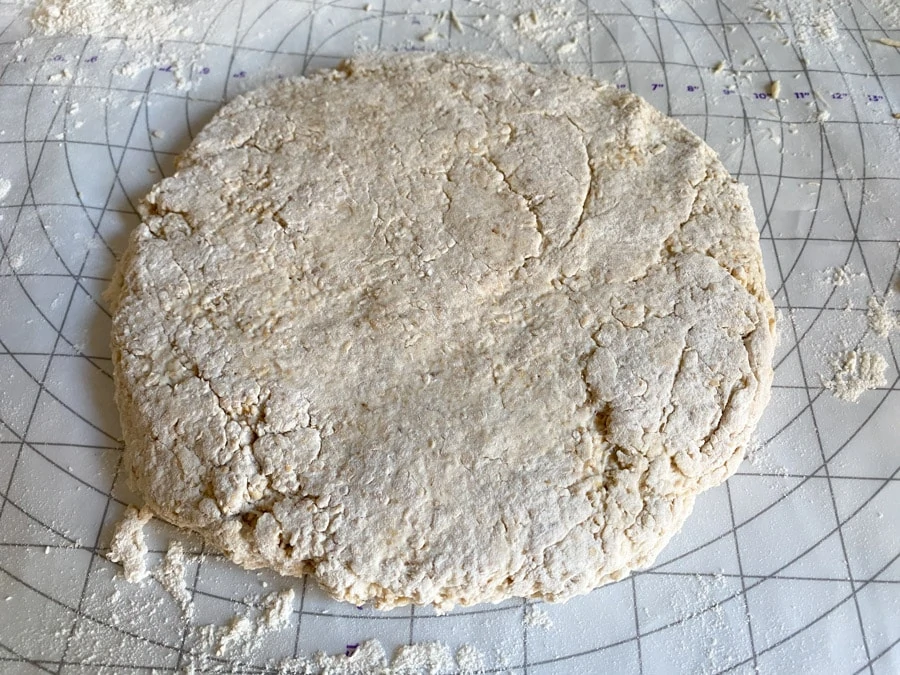
It may need a little gentle kneading and adding a bit of flour at this stage to create a less sticky mix, but be careful not to handle the mixture too much to avoid removing any air the baking soda has added.
Indent your dough to provide four quarters, then gently add the dough to your griddle/skillet, making sure the heat is focused in the centre of the pan.
If you’re baking your bannock in an oven we suggest you bake at 180C for 20 minutes, turning halfway through.
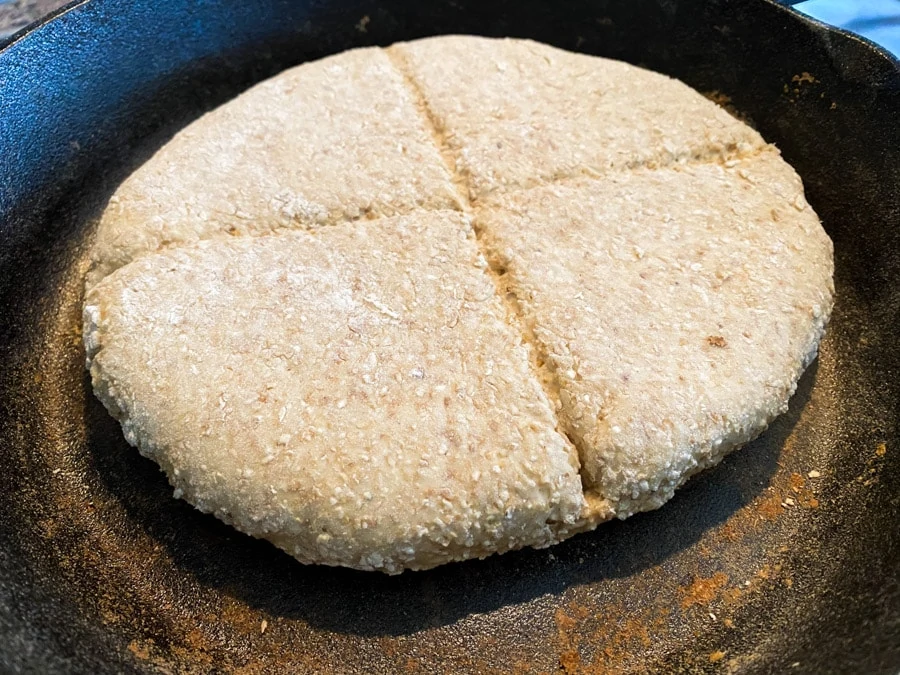
You should only have to turn your bannock once, leaving it longer on the first side to do the majority of cooking then turning it over to lightly brown the top. Don’t be afraid to give it a shuggle while cooking to make sure it’s not stuck to the bottom, but allow it to cook a little first.
Your bannock should rise a little from maybe 3/4 of an inch to an inch raw to 1.5-2 inches once fully cooked. If your bannock is too thick you may need to turn cook for a bit longer on the second side to ensure the middle is cooked, this will depend on your griddle/skillet size.
Remove and cook the other round.
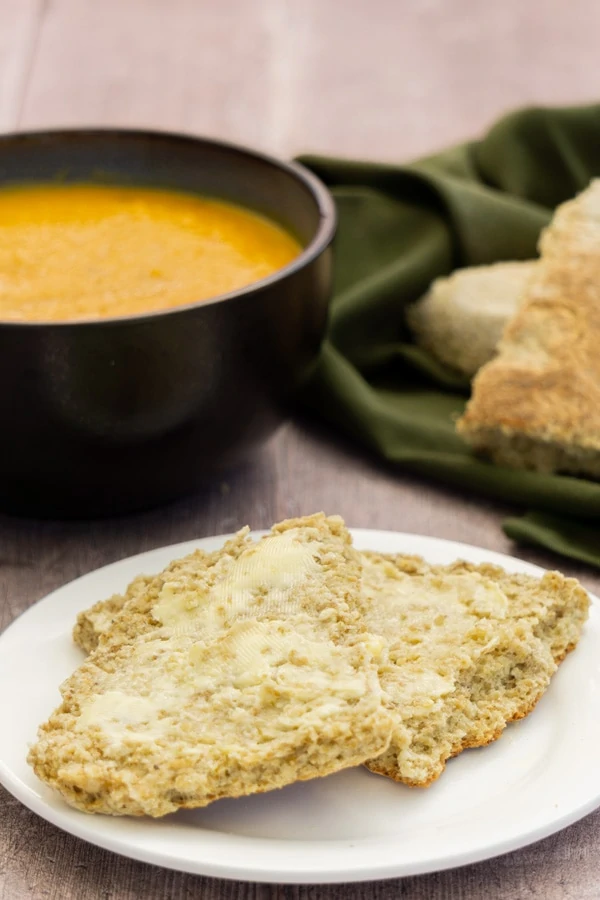
Variations
This post sticks to a traditional Bannocks recipe and they’ll have a very traditional taste. However, to make your own bannock or Scottish bread recipe you can add any ingredients you like.
Why not add some cooked bacon pieces or seeds? A cheese topping will work well, as will adding some chilli and cardamon to the mix.
So, your bannocks recipe is only limited by your imagination—and what’s in your cupboard, of course!
Enjoy,
Phil & Sonja
Scottish Bannocks Recipe
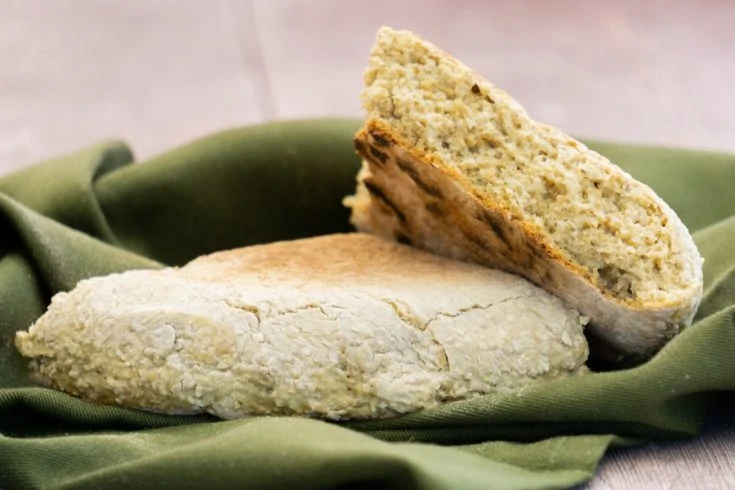
This is a traditional Scottish Bannocks Recipe, or Scottish Skillet Bread. These were traditionally made with barley or oatmeal, so we have used oatmeal in this recipe. You can change it up with added ingredients like bacon bits, chilli, herbs, or cheese if you wish!
Ingredients
- 330g Oatmeal (2 5/8 Cups) - We mean ground oats
- 265g Plain flour (2 1/8 Cups)
- 2 tsp Baking soda
- 1.5 tsp Salt
- 1.5 Cups Buttermilk (375ml)
Instructions
How to make Bannocks – Step by Step guide
- If you’re making your own buttermilk do that first (see notes).
- Mix your oatmeal, salt and flour together in your bowl.
- Measure our your buttermilk, if you've made extra, and add the baking soda.
- Add your buttermilk mixture slowly to the oatmeal and flour mix, you may not need it all so add around a cup then use a spoon to bring it together before continuing with the rest if necessary.
- Turn the dough out onto a floured surface and split into two.
- Manipulate the dough into a flat circles the right size to suit your griddle, skillet or frying pan. Be careful not to handle the mixture too much at this stage to avoid taking any air the baking soda has added from it.
- Heat your griddle/skillet with a little oil. If you're baking your bannock in an oven we suggest you bake at 180C for 20 minutes, turning halfway through.
- Indent your dough slightly to provide 4 sections, like you would a pizza.
- Once it's hot add the dough to your griddle/skillet.
- You should only have to turn your bannock once, leave it to brown on the underside but don’t be afraid to give it a shuggle to make sure it’s not stuck to the surface of the pan.
- Once you’re sure it’s cooked turn the bannock over to lightly brown the other side. You should be able to tap it and hear a hollow sound.
- If your bannock is too thick you may need to cook for longer on the second side but this will depend on your griddle/skillet size.
Notes
If you don't have buttermilk it's possible to make your own. Add two tablespoons of lemon juice per cup of milk, cover and allow to sit in the fridge for about 30 minutes.
Nutrition Information:
Yield:
8Serving Size:
1Amount Per Serving: Calories: 187Total Fat: 2gSaturated Fat: 0gTrans Fat: 0gUnsaturated Fat: 1gCholesterol: 2mgSodium: 841mgCarbohydrates: 36gFiber: 2gSugar: 2gProtein: 7g
The nutritional data in this recipe is provided by a third party and these values are automatically calculated and offered for guidance only. Their accuracy is not guaranteed.

Excellent site! But, how hot should my pan be to cook the Bannocks; spit hot, very hot, moderate or what?
Firstly we LOVE the phrase spit hot! You don’t want the bannocks to burn straight away, they need to heat through for a little while. Heat the pan to a hot temperature but turn it down when you add the bannocks to more of a medium temp. We cook on gas which seems to be uber hot, keep a close eye on it and keep it moving.
I made this but reduced the flour to about 1/2 cup. I cooked them as i would cook pilelets in a cast iron frypan and the results were amazing.
Dale
That’s the joy of recipes as old as Bannocks. Whatever works for you is the right way to make them! Enjoy!
I could not find “Pilelets” what in the world is that? Betty Blazic [email protected]
It may be a typo and pikelets might be the correct word
Hi, how do you use 375ml of full fat milk/buttermilk, and end up with zero saturated fat?
Hi Gideon, thanks for this. Our nutrition values are generated by a third party and just for guidance. You are quite right in your comment and have been playing with the system to try to make it as accurate as possible. For now, we have added a wee note so people know they are not 100% gospel! Thanks for pointing this out.
That will be because actual buttermilk has less than 1% fat and closer to zero than 1% saturated fat. Substituting with full milk and lemon juice will have a wee bit more as you suggest.
I use top milk which is non-homogenized whole milk(in US, 4% butterfat) or 1/2 & 1/2. (half whole half heavy cream) Because of the fact that there are no eggs or other fats. Also, heresy perhaps, 1 1/2 tsp sugar. I slip in ground flax for fiber and omega 3’s. sometimes grated orange rind. But so far, no kimchi.
These were great for Imbolc! Thank you so much!
It says it’s possible to do these in the oven, but I don’t see a temperature or time for baking the bannocks
Hi Elizabeth,
You’re right we’ll need to add that in! You can bake in a 180C oven for 20 minutes, turning halfway through.
I’ve had this recipe on my “to-do” list for a year since I read a report on a local old drover’s track that mantioned that the drovers would have packed bannocks for sustenance on their journey. I am a lover of cooking and experimenting and Scottish foods so this recipe has ticked a lot of boxes and it worked magic first time. They are so yum and hearty, I think I’ll be adding them.to my packed lunch tradition for wandering the beautiful highland hills and mountains. Thank you! I should also say, I am vegan and this worked perfectly subbing with oat milk.
Totally burned the one I put in a pan but the oven is very good. And so easy too!
Haha we definitely had that issue when we first made them too! Low and slow seems the way to go for the pan, once you’ve put it in. Glad that the oven worked for you too!
what is the diameter of you skillet?
Hi Sarah, Sorry for the delay in getting back to you, our skillet is 26cm.
I use a well-seasoned pizza stone in the oven for these and it works perfectly!
Excellent suggestion, Thanks Jacqie! Cheers, Phil & Sonja
Hello, Is ground oats oat flour? Thank you.
Yes it’s the same thing! It should be 100% oats.
Question – if I need to bake in an oven, at what temperature and for how long how long would I be baking it for. We are using a wood fired oven.
Hello,
For a standard oven we suggest baking them at 180C for 20 minutes, turning halfway through and keeping a close eye on them. We have no idea about wood fired ovens we’re afraid.
“oatmeal” — I paused a minute. Your note said Ground Oats. But having rolled oats, pinhead oats, oat groats and steel-cut oats in my pantry, I am wondering which one to mill for these bannocks. I looked closely at the pictures and was pretty sure you had used pinhead oats, but want to find out for sure. My bannocks have all been bere meal and barley flour, so look forward to trying them with oats. Thanks.
Oatmeal is more like an oat flour, so the oats are further ground down. We would probably use rolled oats and grind them down further.
Trying to sign up for your e-mails but when I enter my name per the request it says it’s invalid …I know my name. Why is it not asking my e-mail address?
not sure what’s happening there, I’ve added you to the list manually now I hope that’s okay – Phil
Could you explain what ground oats are and how they differ from rolled oats. Can I buy ground oats in the supermarket or do I grind my own from rolled oats?
Here;s what we say in our porridge post, hope it helps – Oat Groat – The part of the oat cut from the kernel cut from the husk of the whole grain.
Rolled Oars / Jumbo rolled / Old Fashioned Oats – Probably the most popular or common oat, these oat groats are flattened by rolling and have been through a steam process. They have a more gentle flavour but take less time than some other oats to make porridge. We use these oats in this recipe.
Scottish Oats – Made from whole Oat groats, which are then crushed or ground via two large stone wheels or millstones. The result is a texture slightly rougher than flour, and a smoother, quick-to-make porridge, deemed the most traditional way to make Scottish porridge.
Steel Cut Oats / Irish Oats / Course Oatmeal / Pinhead Oats – These are oat groats sliced into half or thirds by steel blades. They take longer to cook and need a higher liquid ratio to make porridge. This means you require fewer oats to make a bowl, meaning you stay full longer.
Instant – The most processed oat we’re discussing, the instant oat is often cooked, dried, rolled and then rolled again. This means the instant oats cook very quickly but lose their texture, not unlike Scottish Oats. They have the same nutritional value if nothing is added, but they are often sweetened or flavoured.
Can you freeze? If you can, how do you warm them before serving? Thanks.
We don’t see why not, like any bread I would either fully defrost it then heat gently, oven or grill if sliced.
Hi,
How would you adapt this recipe for barley bannocks, using pearl barley ground at home? Thanks.
Sakura
Honestly, I don’t know. If we were trying to find out we would have to suggest trial and error. Not a helpful response I know, sorry!
I love them! I thought they were originally Métis and somehow the Scottish had learned about them and brought them to Scotland from Canada. Learned something new!
My grandchildren love bannock with this recipe, especially with jam or honey. I have a hard time getting them to the table – bits and pieces are torn off and eaten early!
Thank you so much!
Thanks so much for sharing this, we’re so happy you like them!